July 11, 1914 The U.S. Navy launches the U.S.S. Nevada its first of thirteen planned standard type battleships that would extend over five different classes. The standard type battleships were classified during the time period as super dreadnoughts. The Nevada would have a storied career with the U.S. Navy.
The U.S.S. Nevada (BB-36) was the third ship, up to that point to be named after the state, and was the first of a two Nevada Class battleship with the second ship being the U.S.S. Oklahoma. The Nevada had displacement of 27,500 tons and a length of 583 feet (178 meters) and was armed with 10 x 14 inch (356 mm) guns and 21 x 5 inch (127 mm) guns as well as a series of anti-aircraft guns. When it was modernized in 1942, its 5 inch guns were reduced from 21 to 16, and for anti-aircraft defense it added 32 40mm Bofors and 40 20mm Oerlikon cannons which increased the displacement to 30,500 tons. She had a top speed of 20.5 knots and a crew of 864.
The Nevada eventually participated in the last few months of World War I where it was stationed in Ireland to protect convoys going to Great Britain. Her arrival in the war was late because Great Britain was short on fuel oil, so it could not support the Nevada like it could four other coal fired battleships that arrived in British Isles in 1917. The Nevada however did not see any wartime action in its first war deployment.
The Nevada was most famously known for being one of the eight battleships at Pearl Harbor during the Japanese attack on December 7, 1941. The Nevada was struck by one torpedo and up to ten bombs during the two waves of the attack. The battleship, though on battleship row, was not moored alongside any other ships and was able to get underway during the attack. Due to the damage it suffered though, it was intentionally grounded at Hospital Point on the western part of the harbor to keep her from sinking. The crew suffered 60 killed and 109 wounded during the attack.
The Nevada was refloated in February 1942 and was moved to a drydock in Pearl Harbor for temporary repairs and then was sent to Puget Sound Navy Yard in Washington for full repairs and a modernization. The U.S.S. Nevada was ready to join the fleet in October 1942. Her second World War II battle was in 1943 by providing fire support for the capture of Attu. She was then sent to the Norfolk Naval Yard for further modernization in June 1943. Once the modernization was completed the Nevada assumed convoy escorts in the Atlantic until April 1944 when it was sent to the United Kingdom in preparation for the D-Day landings in Normandy France.
The Nevada provided fire support for the D-Day landings from June 6 – 17 and on June 25 around Cherbourg. The Nevada fired on targets as little as 600 yards (550 meters) to as far as 20 miles (31 kilometers) with its 14 inch guns. The Nevada on D-Day alone fired over 900 rounds from its 14 inch guns and over 3,000 rounds from its 5 inch guns. The Nevada was the only battleship to be present at both Pearl Harbor and D-Day. In July 1944, the Nevada was sent to the Mediterranean Sea to support the allied landing in Toulon in the south of France that took place in August and the Nevada stayed until September. The Nevada was fired upon during operations around France but was never hit.
The Nevada having fired so many shells, it returned to New York to have it 14 inch and 5 inch gun barrels either replaced or relined. After these repairs, the Nevada was sent back to the Pacific where it provided fire support at Iwo Jima in February 1945 and then was sent to provide fire support as part of Task Force 54 for the invasion of Okinawa in March 1945. During the Okinawa invasion the Nevada was struck by a kamikaze on the morning of March 24th that killed 11 sailors and damaged the Number 3 14 inch gun turret and three 20mm anti-aircraft guns. The Nevada lost another 2 sailors when a shell from a shore battery on April 5. The Nevada in its final days of the war sailed within gun range of the Japanese home islands and was part of the naval occupation of Tokyo Harbor at the end of the war.
After the war, the Nevada was declared too old for the post war navy and became a target ship for the atomic bomb tests at the Bikini Atoll as part of Operation Crossroads in July 1946. Crossroads was a two bomb nuclear test, codenamed “Able” and “Baker” with the Nevada being the specific target for “Able”. The Nevada survived, though irradiated, the Crossroads test as she refused to sink. The Nevada was towed back to Pearl Harbor and became a target ship for the U.S.S. Iowa and two smaller ships, but again the Nevada refused to sink. She was eventually sunk by an aerial torpedo. On May 2020, her wreck was located in 15,400 feet (4,700 meters) under the water and 65 nautical miles southwest of Pearl Harbor.
U.S.S. Nevada painted orange since it was the target point for Operation Crossroads “Able” test.
Research or support me through Patreon, Buy Me A Coffee or Ko-Fi.





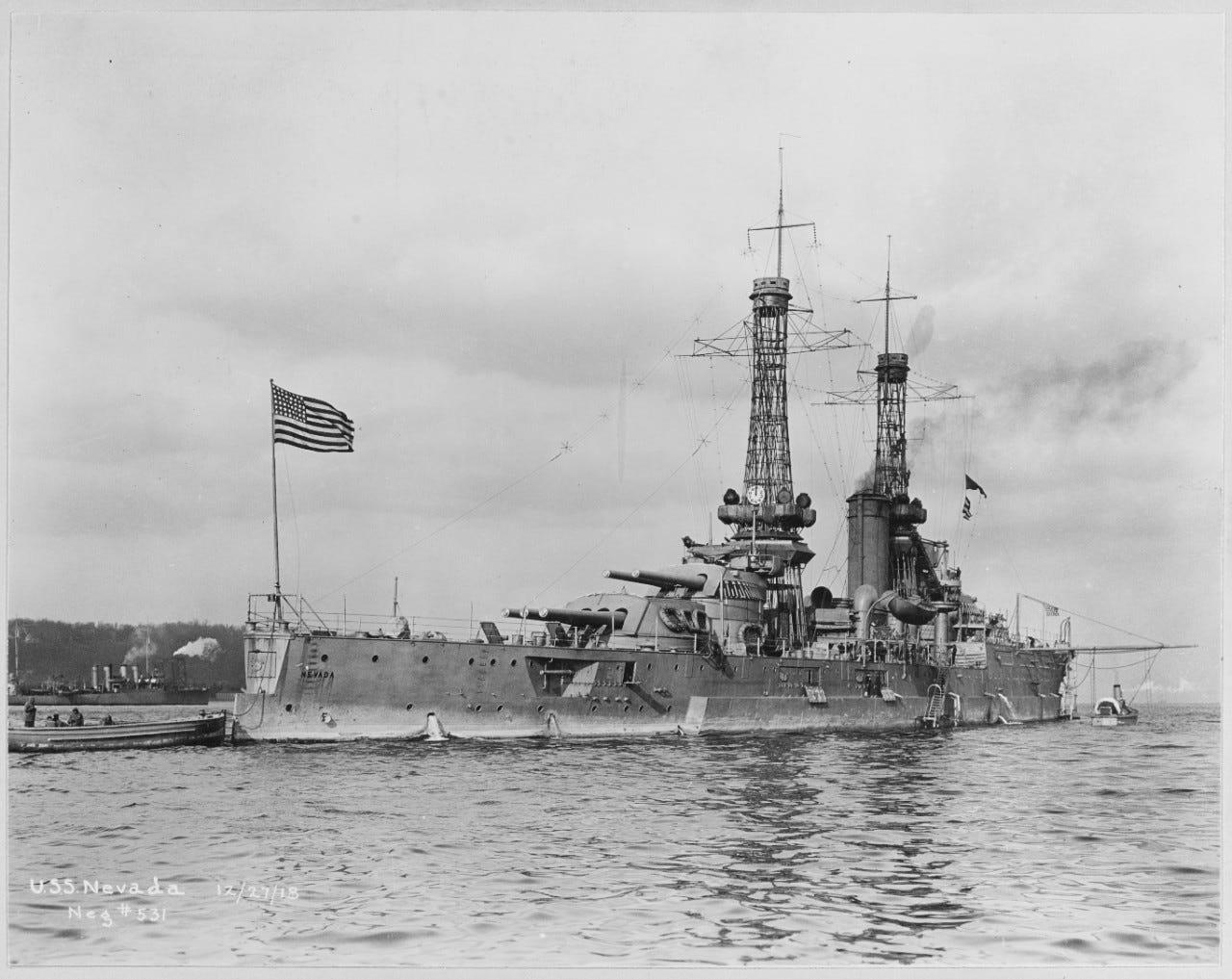
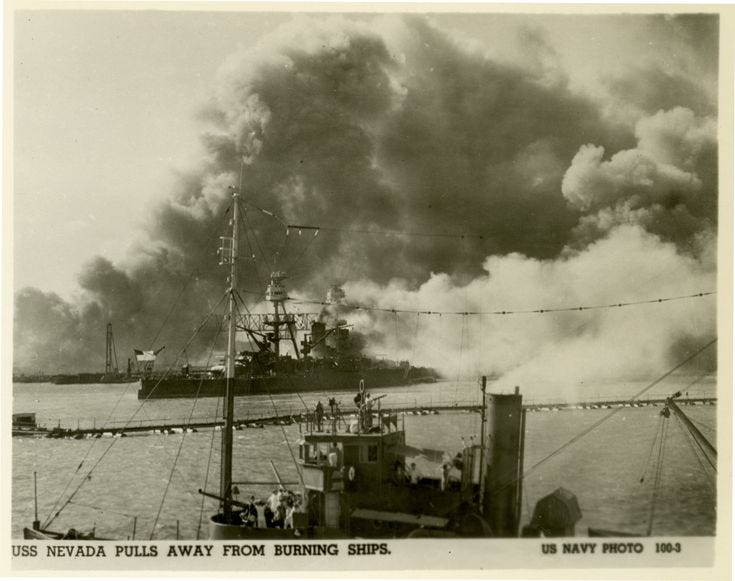
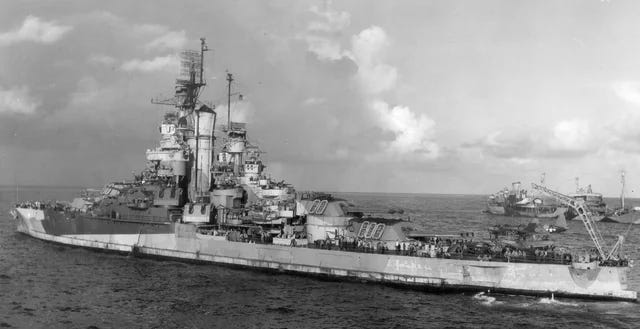
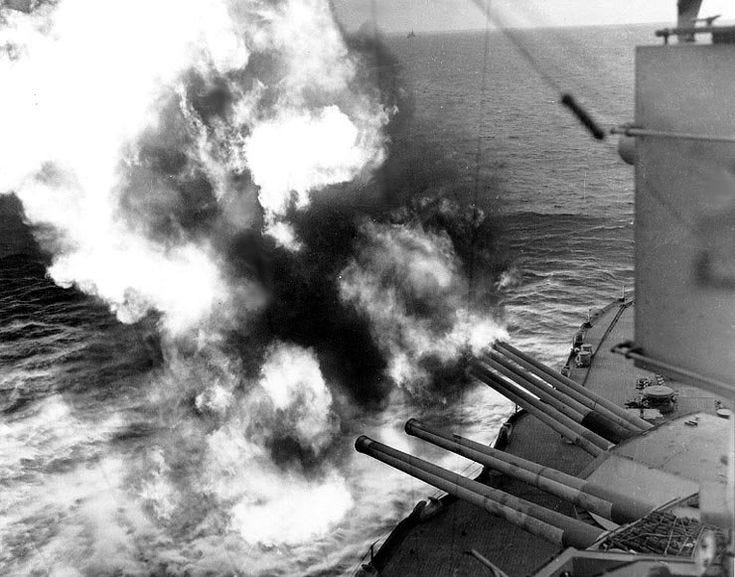
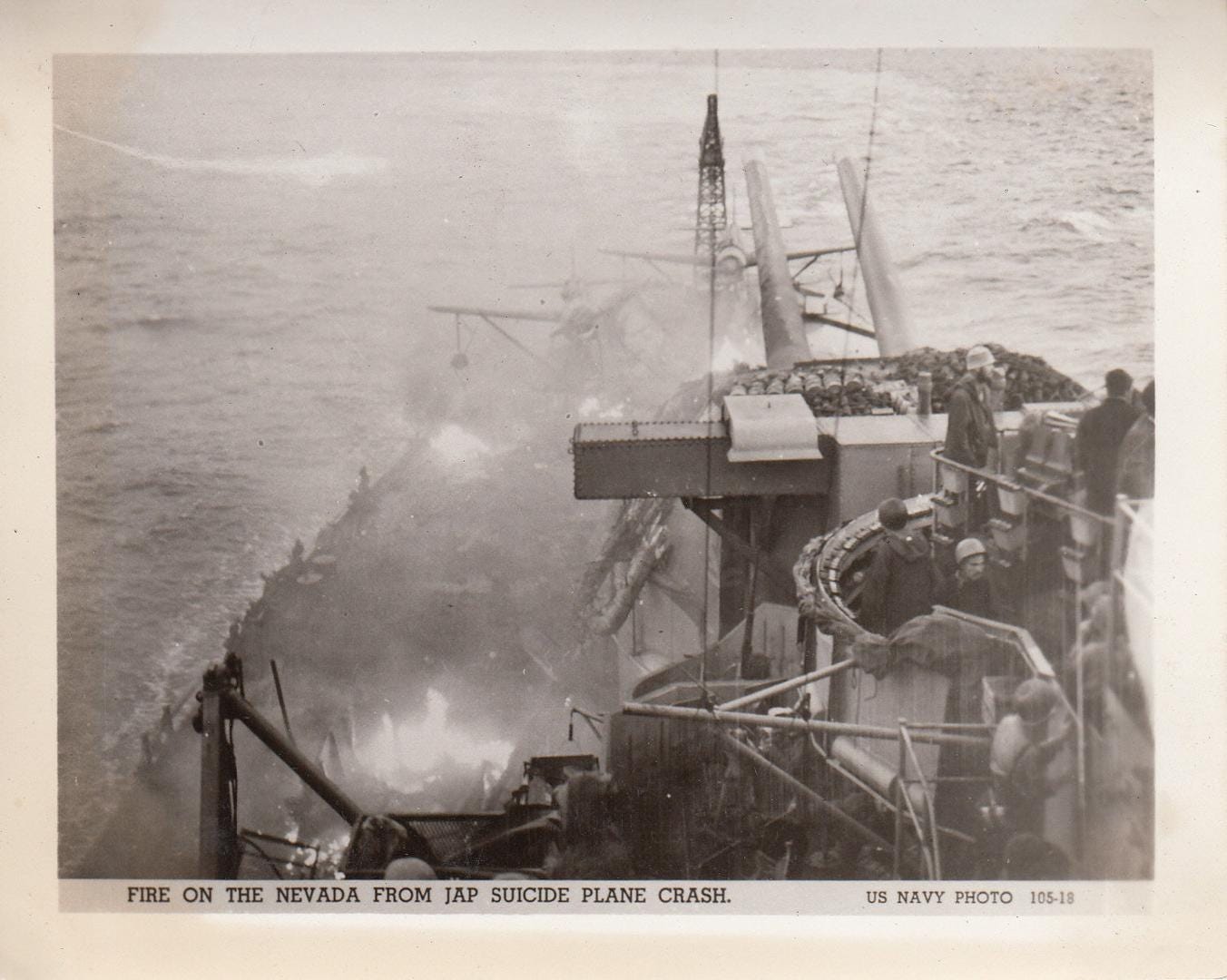
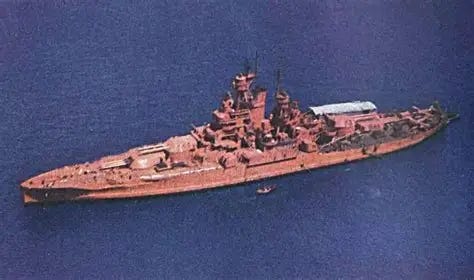
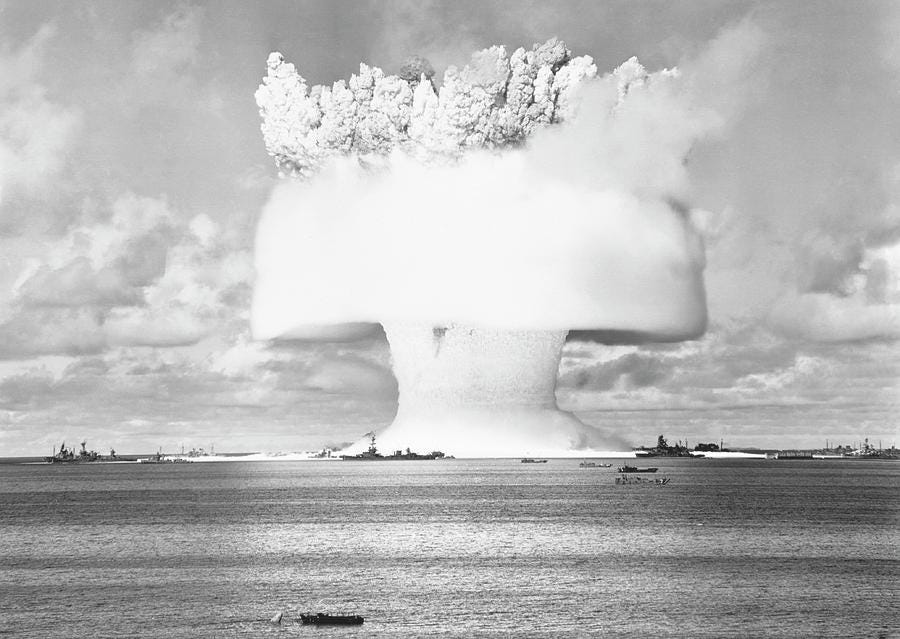
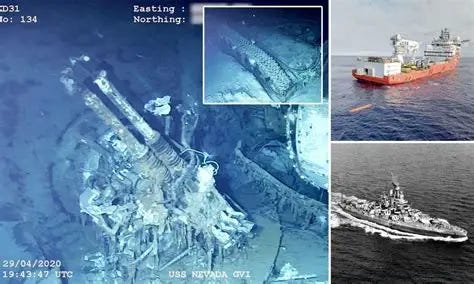
I had never considered the lifespan of a modern battle ship before. Interesting!